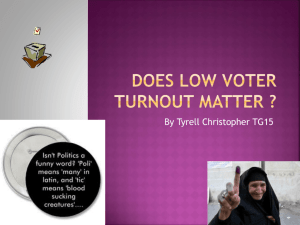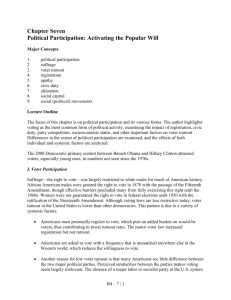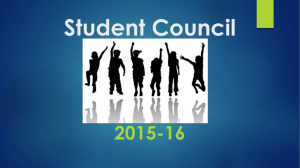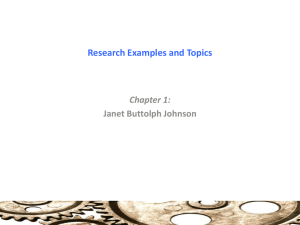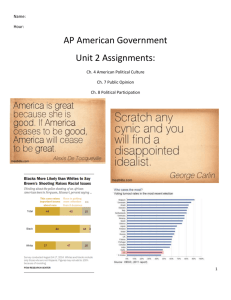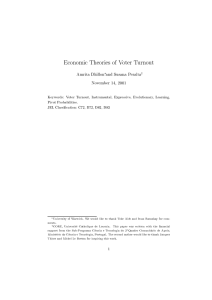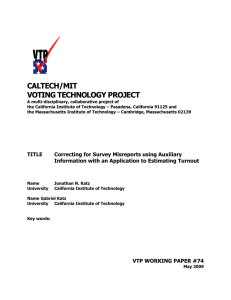PPT - University of San Diego Home Pages
advertisement
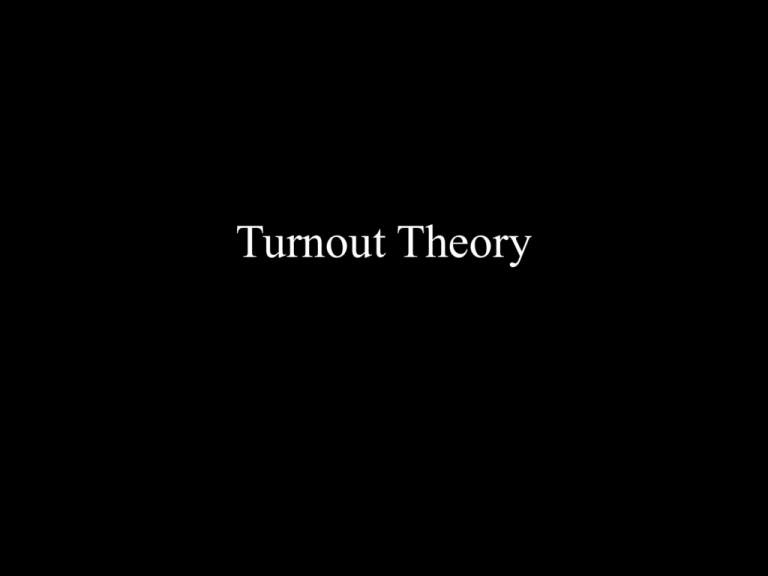
Turnout Theory • Why do people vote? • How can parties, groups, and candidate campaigns encourage people to vote who might not otherwise vote? Recall the Voting calculus P(V) = PB + D – C • The probability of voting is equal to the • voter’s personal benefit from electing one candidate times the probability the vote itself will determine the outcome, • and the emotional benefit of performing one’s civic duty, • minus the transaction and opportunity costs of the act of casting a ballot. Benefits of Voting • Material (virtually zero with secret ballot) • Emotional/expressive (from performing civic duty) • Social benefits (guilt/pride related to performance of civic duty) Correlates to likelihood of voting • *Education* – Socialization – Information, interest • Income • Social connectedness – – – – Age Church attendance Marriage Home Ownership Recall the Voting calculus P(V) = PB + D – C • The probability of voting is equal to the • voter’s personal benefit from electing one candidate times the probability the vote itself will determine the outcome, • and the emotional benefit of performing one’s civic duty, • minus the transaction and opportunity costs of the act of casting a ballot. Costs and Barriers Costs: • Time, effort to vote • Time, effort to register • Informational costs Barriers to voting: • Incarceration (46 states) • Felons on parole • Residency requirements • Registration • Understanding the process How many voters do turn out? • Rate = voting population eligible adult population • Two problems: – Eligible adult population hard to know – Voting population hard to know How many voters do turn out? 2004, from Current Population Survey Voting-Age Population Non-citizen Prison Probation Parole Total Ineligible Felon Overseas Eligible Voting-Eligible Highest Office Total Turnout VAP Highest Office Rate VEP Highest Office Rate VEP Total Turnout Rate 221,256,931 8.45% 1,490,169 2,451,708 485,282 3,201,305 3,308,145 202,674,771 122,294,978 123,535,883 55.27% 60.34% 60.95% Percent of eligible voters who vote, presidential elections 90 80 70 60 50 40 30 20 10 0 1840 1856 1872 1888 1904 1920 1936 1952 1968 1984 2000 Why has turnout declined? • • • • Greater eligible population Changes in party mobilization Uncompetitive elections Voter registration What could you do to increase turnout? • Through public policy • For a particular candidate • How might you decrease turnout? Effect of Registration laws on turnout 80 70 60 50 40 30 20 10 0 Oregon (vote by mail) Minnesota (same day registration) % Voted National average In any given election, why might more people turn out? • • • • • High media coverage Significant office Important issues Attractive candidates Competitive race


